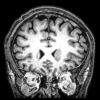You can always try a mild testosterone cycle for maybe two or three months just to see if you like the results and how beneficial it would be for you. I would say maybe 150 mg a week of testosterone cypionate split into two different shots (75mg 2x/wk) and then when you’re finished wait 2-3 weeks using nothing as it takes that time frame for the testosterone to leave your body. Then you start Clomid at 50mg per day for 30 days and that should be fine I’m sure you’re naturally levels will recover just fine. If you really want to optimize recovery you with use hCG at 500iu 2x/wk from the start of the testosterone until you finish and including the 2 to 3 week time frame you were off as the testosterone is still in your system. Then when you start Clomid you stop the hCG and just use the Clomid for 30 days.Oh, I thought the daily testosterone was just as important, that's the one that swings a lot. Anyway in the study my prolactine dropped almost half from 1.2iu/L to 0.75iu/L (0.10 - 0.65iu/l is normal) and free testosterone jumped from 370pmol/L to 520pmol/L (unfortunately from the other blood tests I only have the daily results). I will let my full testosterone levels checked on my next blood test.
Sorry, I thought you meant testosterone therapy and cycling it with Clomid was the same thing. I was talking about cycling testosterone and Clomid and wondering/considering (if) that (is/was) a option without damaging the natural production after the cycle is done. Now I know what you meant, thanks for clarifying.
I will probably never be able to get off antipsychotics so I guess the natural production of my T (and other important hormones) will be compromised. I might consider a trial with T and Clomid (not like bodybuilders do but more in a cautious way and shorter cycle's).
As for HGH, I will definitely try that after I'm done losing my fat-mass and start intensive bodybuilding again.
One last question though, how much pmol/L testosterone is considered dangerous?
-edit- on a side note, although my libido is normal and never changed, another reason I know antipsychotics have a bad effect on my testosterone levels is because my testies have shrunk quite a lot ever since I'm on it (13 years) and my sperm production has been very low ever since.
I never really researched antipsychotics effects on testosterone. That’s interesting that your testes shrunk. I’ve only heard of that happening when using steroids or Exogenes testosterone creams, shots, etc. I would say mine are about 50% smaller than when I first started. Not noticeable when looking but when feeling it’s definitely noticeable LOL I never cared because every girl I was with said they could give two shits about testicles and I’ve been married for almost 7 years now anyway. The good thing is they do not shrink your penis at all in fact long-term it causes growth. Not so much length but a pretty noticeable increase on girth which is what about 90% of women prefer when they talk about “size.“ That makes sense because when you think about it the cervix is 5 to 6 inches inside the woman and it’s not a pleasurable feeling body part. But when the vagina stretches it puts more sensation on the areas that are stimulated sexually and that’s when width/girth comes into play. HGH plays a role in width as well.
Raloxifene increases natural testosterone about 20%.
https://www.ncbi.nlm...ubmed/15080785/
And it appears it lowers prolactin because prolactin and estrogen go hand in hand. The more estrogen you produce the more prolactin you can produce so by Raloxifene lowering estrogen that could be why prolactin decreased.
https://www.ncbi.nlm...ubmed/12370106/
As far as reference ranges for when testosterone becomes dangerous there really isn’t any. It’s all based on the individual. I think you are not in the United States but here different labs use different values but the one I am the most familiar with and did the most testing on is in ng/dL total testosterone range 250-1100
Free testosterone range 35-155 pg/mL
So it’s not like if you are at 1200-1300 that’s considered dangerous. In fact a few hormone replacement doctors prefer their patients closer to 1500 and then many prefer them in the range. What’s most important is to follow up on cbc/metabolic panel bloodwork. Some of the main side effects of testosterone when it’s too high are high blood pressure, LDL increase, HDL decrease, and the main one is the thickening of blood. That’s why it’s important to monitor RBC’s, RDW, platelets, Hemoglobin and hematocrit. They will increase but studies have shown that the increase is not as damaging as say someone who has their levels increased from smoking or polycythemia vera or erythrocytosis. In fact when blood becomes thicker from testosterone it is called secondary induced erythrocytosis. Studies show it was not as harmful because they did a trial of people living at high altitude‘s who had secondary induced erythrocytosis. Their hematocrit was over 65( range 38.5-50%)They did not have the same health negatives as people with the genetic condition or the condition caused from smoking and other diseases. The main difference between the two was that the people at high-altitudes still had normal platelets. You can have high hemoglobin and red blood cells but if your platelets are normal it can be safe as that is the key factor in stroke’s and blood clots. For example my hematocrit is high all the time(around 53-55) but my platelets are perfect at 179 (range 140-400) And the studies with the people living in high-altitudes had normal platelets as well but smokers and people who genetically have erythrocytosis and polycythemia had high platelets. So really there’s no real “number” to go off of. You just want to monitor routine lab work as well as blood pressure and you can assess from there.
Edited by John250, 05 November 2018 - 12:45 AM.





















































